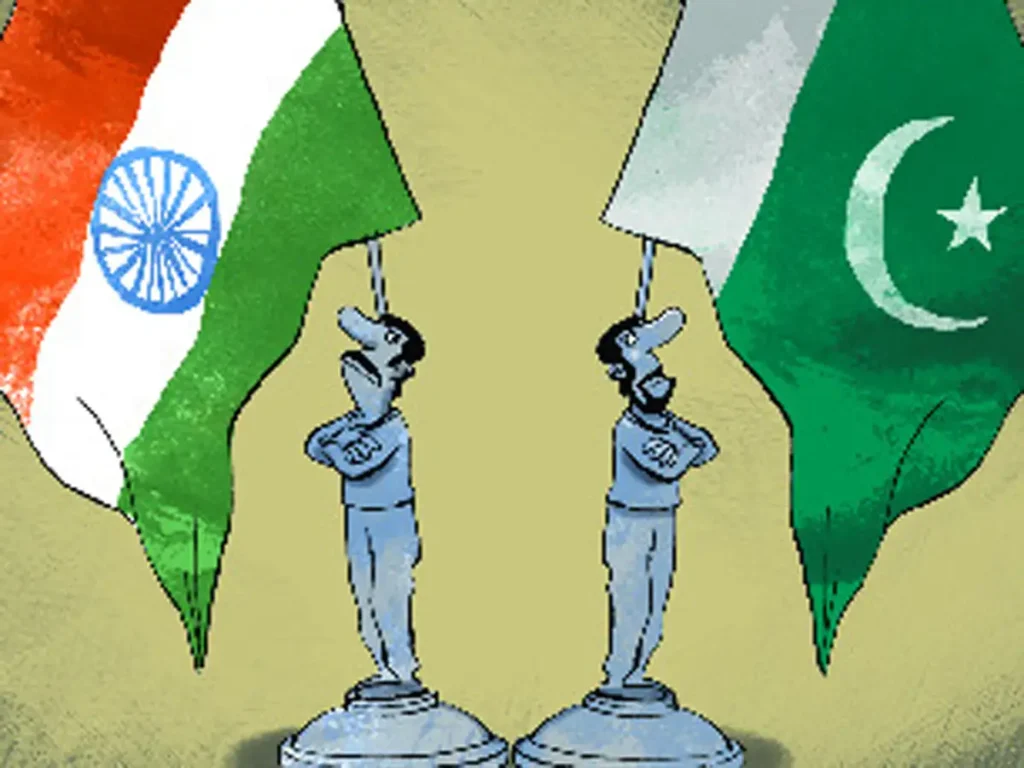While guns have largely fallen silent along the Line of Control (LoC) since the 2021 ceasefire agreement, India and Pakistan remain embroiled in a different kind of standoff — a cultural cold war playing out through films, media, sports, and diplomacy.
The Ceasefire That Changed Little
In February 2021, both nations reaffirmed their commitment to a ceasefire along the LoC in Kashmir — a surprise move welcomed by global observers after years of escalations, including the 2019 Pulwama-Balakot episode. Since then, border clashes have sharply declined. But the reduction in overt military hostilities has not translated into a thaw in broader relations.
Cinema as a Battleground
Cultural exchanges, once a bridge between the two nuclear neighbors, have been virtually frozen. Bollywood movies remain banned in Pakistan, and Indian filmmakers have stopped casting Pakistani artists due to public and political backlash. Pakistan’s government, in turn, has intensified support for domestic media that paints a critical image of India, particularly over Kashmir.
Even international platforms like Netflix and YouTube are caught in the crossfire. Pakistani authorities have restricted access to Indian content on digital platforms, while Indian nationalists have called for boycotts of any project involving Pakistani talent.
Sporting Tensions Persist
Cricket, often seen as a diplomatic tool, is now a symbol of estrangement. Bilateral cricketing ties have been suspended since 2012, and matches between the two teams are now limited to ICC events. Even those occasions are fraught with controversy, jingoism, and intense political overtones.
Earlier in 2024, a debate erupted in India over whether the national team should travel to Pakistan for the Champions Trophy. Ultimately, the tournament is being considered for relocation — another sign that even sports cannot overcome the trust deficit.
Narratives and Nationalism
Both nations are actively cultivating national narratives that define the other as a long-standing threat. School curricula, political speeches, and state-backed documentaries frequently highlight historic grievances and security concerns. While governments may avoid direct military confrontation, they are fueling soft power rivalries that perpetuate suspicion and hostility.
Social media adds fuel to the fire. Troll armies, misinformation campaigns, and hashtag wars dominate platforms like X and Instagram, as nationalists from both countries weaponize culture to score points.
What’s at Stake?
The prolonged cultural isolation risks normalizing hostility among younger generations in both countries who have never known a time of genuine peace. It also hinders regional cooperation on shared issues like climate change, public health, and economic development.
Experts warn that the absence of cultural diplomacy could solidify the current impasse. “Art, sports, and culture were once used as tools to soften political divides. Now, they’re being weaponized,” says a South Asia analyst based in Washington, D.C. “That’s a dangerous trend.”
A Cold War With No Clear End
The ceasefire may have stopped bullets, but not the battle of narratives, perceptions, and identity. Unless leaders on both sides take bold steps to re-engage through culture and people-to-people ties, the India-Pakistan relationship may remain stuck in this 21st-century version of a cold war — cold in diplomacy, but intense in emotion.

